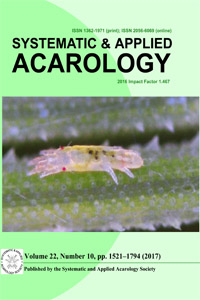To better understand the effect of individual- and group-rearing conditions on predator performance, we studied the life table and predation rate of the predatory mite, Phytoseiulus persimilis Athias-Henriot, after the mites had been individually- or group-reared on two-spotted spider mites, Tetranychus urticae, eggs at 25±1°C, 65±5% RH and a photoperiod of 16: 8 (L:D) h. The net reproductive rate (R0), intrinsic rate of increase (r), net predation rate (C0), finite predation rate (ω) in the individually-reared predators were 40.61 offspring, 0.2594 d- 1, 437.3 T. urticae eggs, and 4.8668 preys/d, respectively. Similar values were obtained when the predators were reared in groups (R0 = 43.10 offspring, r = 0.2837 d-1, C0 = 420.9 T. urticae eggs, and ω = 5.9054 preys/d). Mean adult longevities were 28.42 and 25.29 d for group-reared male and female predators, respectively; these values were significantly shorter than those of individual-reared mites (49.87 d for male and 36 d for female). Our results showed that P. persimilis mites could be group-reared in biological control programs without negative effect on their growth and predation potential.
How to translate text using browser tools
25 September 2017
Group-rearing did not affect the life table and predation rate of Phytoseiulus persimilis (Acari: Phytoseiidae) fed on Tetranychusurticae
Sahar Saemi,
Hasan Rahmani,
Aurang Kavousi,
Hsin Chi
ACCESS THE FULL ARTICLE
consumption rate
group-rearing
individual-rearing
life table
predatory mites





